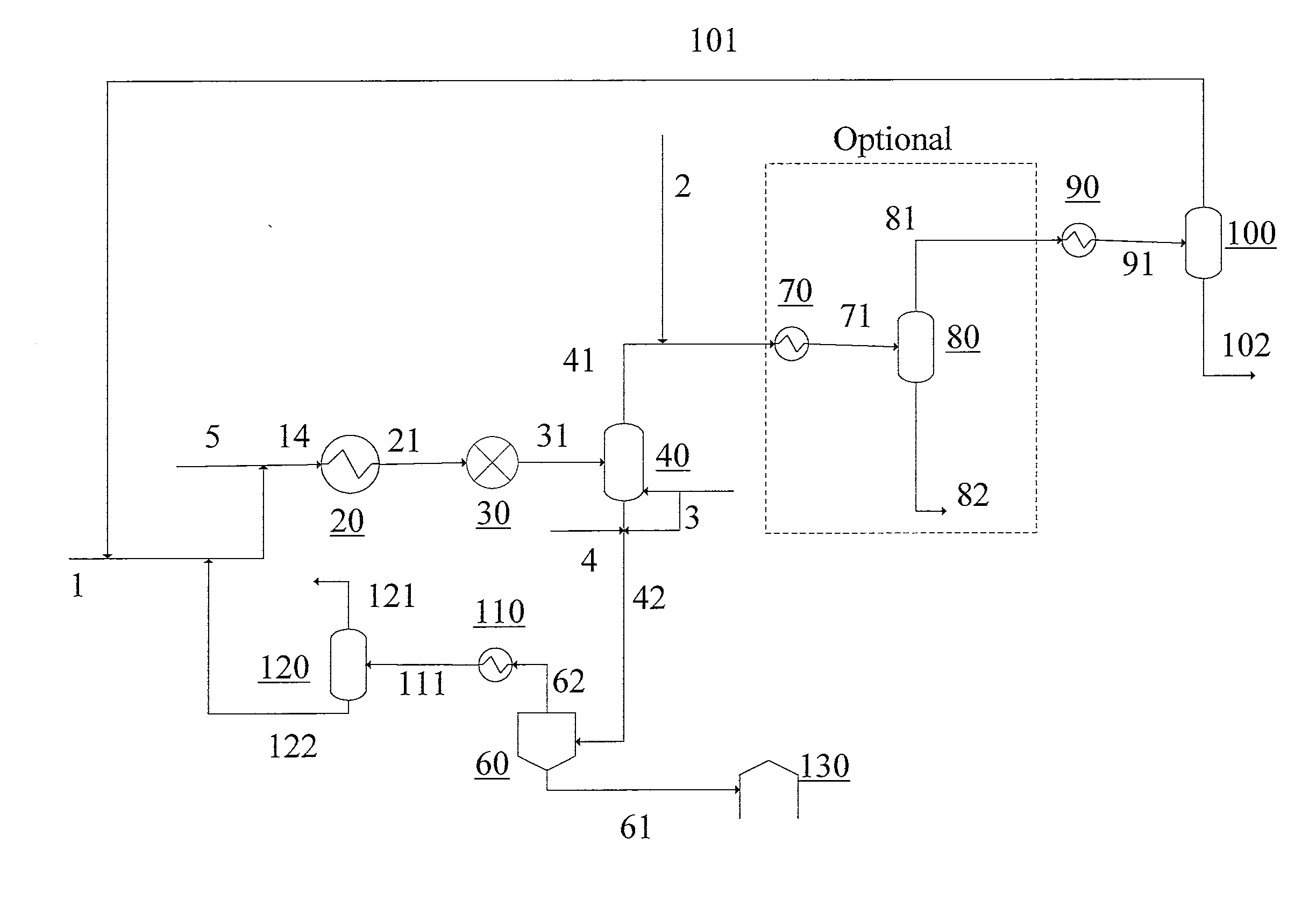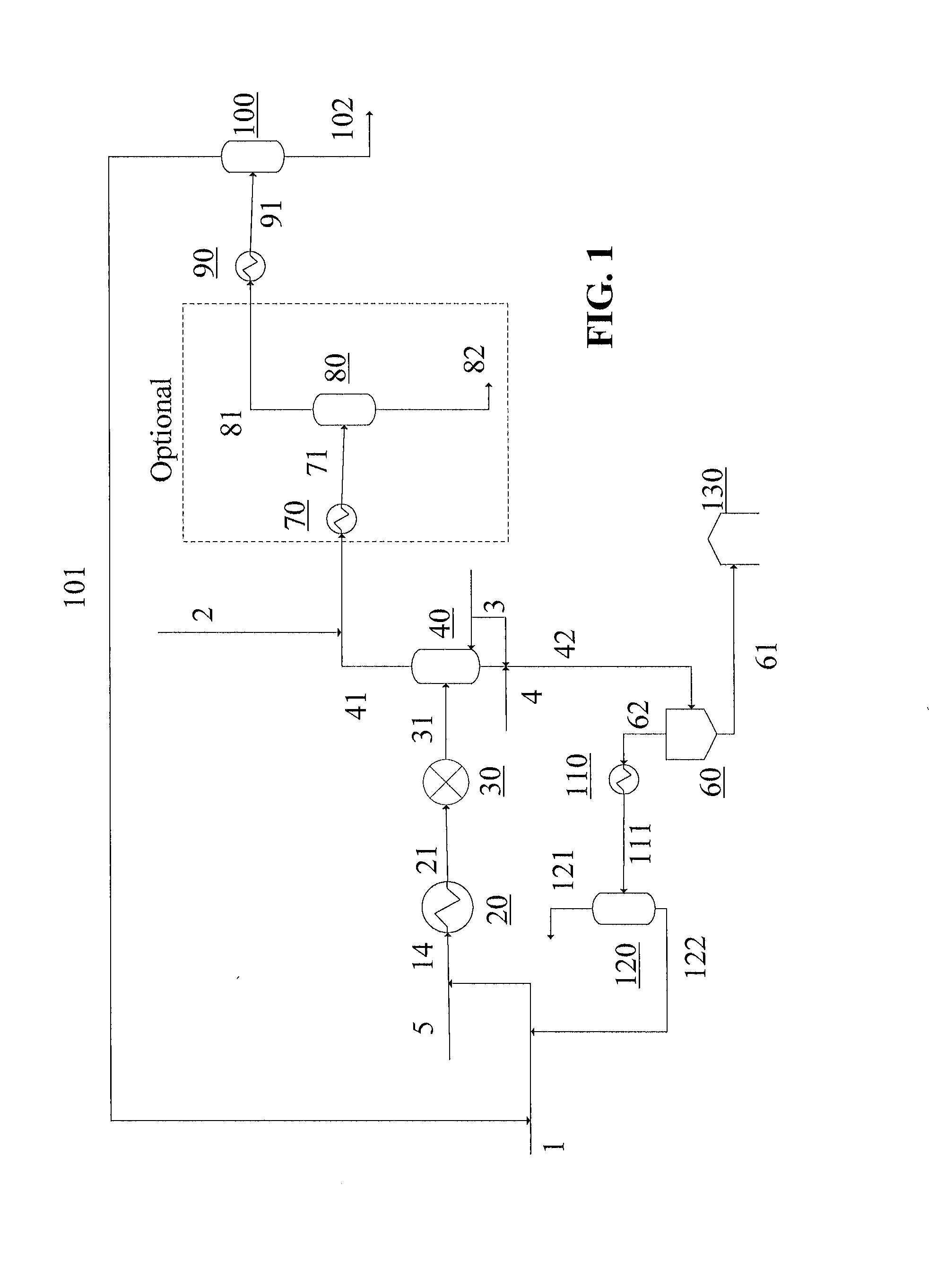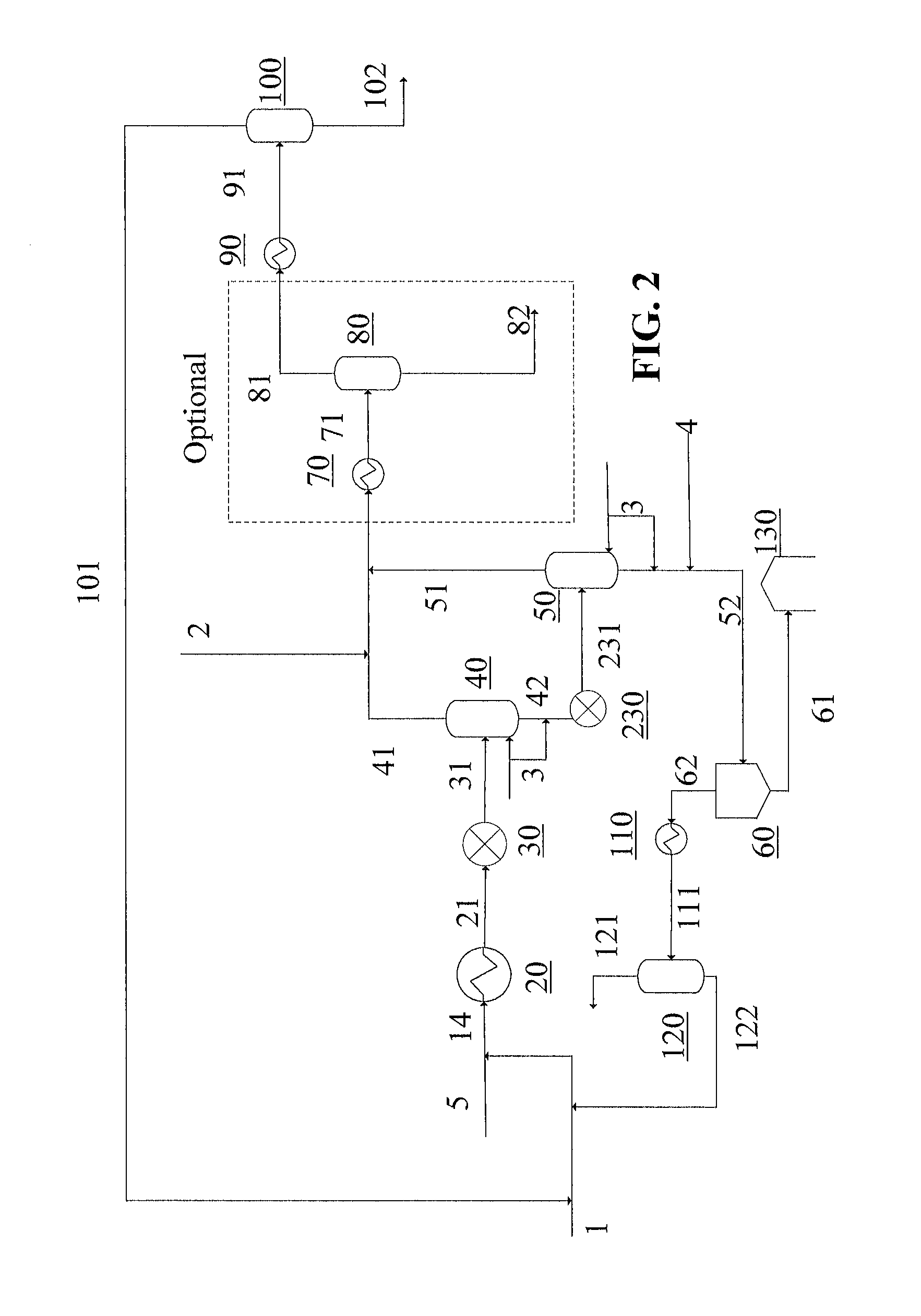It is burdened by plugging if any appreciable
solid asphaltenes are present as in
asphaltene-rich streams like bitumen, and the process has a high
solvent requirement.
Solid particles plug the spray drier
nozzle limiting reliability and thus viability of this scheme in
solid asphaltene rich streams.
The remaining asphaltene remains wet and sticky and has not enough solvent left to keep the heavy bituminous phase (with many solids) fluid.
This process is designed to
handle a rich asphaltene
stream that has solid particles but is a highly costly process since the separation of the solids is done through a solid / liquid separation with additional solvent needed to make the
material flow to the decanter.
The recovered solvent vapour then needs to be condensed for re-use, which is another
high energy step adding complexity.
The challenge with flash / spray driers such as disclosed here using liquid solvent as a transport media is the propensity for the asphaltenes generated in the integrated process to remain wetted before, during and after a flash
drying phase.
The reduced reliability inherent in this approach makes such operations costly for heavy crudes with high asphaltenic content.
However, the process is burdened by the many required process steps to get both the DAO product and the dry asphaltene product.
In addition, the operating conditions required to generate the solid asphaltenes in the decanting step do not work for Canadian bitumen.
No savings in
processing steps are made and an additional material is added increasing the complexity of operation.
The separated asphaltene-rich
stream from the ROSE SDA unit is a liquid solution which is very sticky and requires extreme operating conditions (high temperatures) and added solvent to facilitate feedstock flow through the
process equipment which is very intensive and expensive.
This process does not put the solid asphaltenes through a mild thermal
cracking process, and thus does not convert the asphaltenes from a sticky to a crunchy texture, and relies primarily on excess solvent to transport the asphaltene
stream in a diluted form.
In this set up, a large portion of the original feedstock is downgraded from crude and sent to a low conversion (i.e. coker, gasification) or low value operation (
asphalt plant) reducing the overall economic yield of the crude (in addition to the relatively high process intensity of the operation).
In addition, these long side chains readily entangle with other similar molecules to make large unmanageable sticky clumps.
Adding direct, intense, instantaneous heat to these sticky clumps generates substantial quantities of
coke and light gases.
Rapid cooling creates condensation reactions generating differently configured complex asphaltenes with long side chains that are just as difficult to deal with further downstream in the
processing.
The U.S. Pat. No. 4,454,023 patent provides a means for upgrading lighter hydrocarbons (
API gravity>15) than Canadian Bitumen but is burdened if used with Canadian Bitumen by the misapplication of thermal
cracking that will over-crack and
coke the
hydrocarbon stream, as well as by the complexity and cost of an additional
solvent extraction stage to separate the resin fraction from the DAO.
Recycling part of the resin stream is required to produce a product which meets pipeline transportation specifications and increases the operating costs and complexity and process intensity of the operation.
Typical thermal crackers, like visbreakers, do not appreciably improve the characteristics of the complex Canadian Bitumen asphaltene molecules.
The high-cost solvent is consumed in the gasifier, increasing the capital and
operating cost of the entire operation while also increasing the
carbon footprint of the process and the process intensity.
When viscosities of the streams differ by factors of greater than 1000, static mixers do a poor job of mixing the streams.
In addition, for processes with a stream or streams having a high propensity to foul, such as a modified-asphaltene stream, static mixers create a flow restriction point, added surface area and irregular wall features exposed to the stream, and increase the probability of
fouling.
However, due to the large
viscosity differences between the heavy crude and solvent (well over a factor of 1000 difference), a
static mixer in this application does not provide any noticeable benefit.
After a nominal
settling time, the gas will liberate from the crude especially under warmer temperatures, thus impacting RVP (Reid vapour pressure) on the crude thereby limiting the benefit of this application of shear mixing in crude refining and with a resulting increase in a two-phase fluid which is unsuitable for
pipeline transport and pumping.
The precipitated asphaltenes easily foul the rotating disks in the Foster Wheeler process within the extractor vessel.
 Login to View More
Login to View More 


